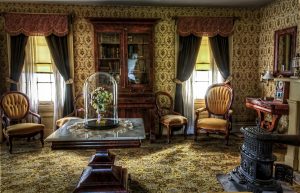 Deciding Which Antiques Should be Restored
Deciding Which Antiques Should be Restored
There are many stories where the owner of an antique restored it, but upon doing so, tragically reduced its value to almost nothing. With that said, in reality, there are many damaged or unattractive antiques that would actually gain value by being restored. So, if you are looking for furniture restoration in Essex, is critical that you gain an understanding of these two situations and when to apply each one.
Value before Restoration
Peter Cook is well known for being a senior producer on the Antiques Roadshow and he wrote an article in the Professional Refinishing Magazine that indicated that you should pay more attention to the inherent value of a particular antique. For example, there are many antiques that were created by well-known artisans that are actually a lot more valuable when they haven’t been restored. If you were to restore these particular antiques, then their value would reduce. The true value of these museum quality antiques is within the original work of the artisan as oppose to how it looks currently. These types of pieces are much better left in their original state.
Look at How Badly the Antique is Damaged
Next, you need to consider the extent of the damage on an antique. For example, if you were to consider an antique sculpture that has missing arms along with water damage in comparison to an antique table that is simply sun faded, there is a huge difference. The entire goal of restoration is to return a particular antique to its original state, but the extent of that damage should determine whether you even attempt to restore it or not.
Antiques with very little damage should be left as is, such as a piece that only has a sun faded surface or simply a bit of wear and tear. On the other hand, antiques that are broken or don’t have their original finish and basically look like an eye sore may be the best pieces to restore. If you can do a restoration that fixes previous badly executed restoration attempts, then you’re definitely making the best choice.
Comprehend the Risks
When pondering whether you should restore a piece or not, you should be aware that the act of restoration is quite risky. This is especially true if the antique is significant to you in any way or if it has great monetary value. You should carefully think about how restoration would affect the antique and the possibility for making it worse. Unfortunately, the act of restoring an antique can actually cause the item to get damaged and even potentially destroyed. This is particularly true if the antique is a piece of jewellery.
Patina
Antiques are typically quite valuable due to their age. As a result, the surface wear and tear on a piece or patina would actually show how old it is and make it quite valuable. So, if you actually destroy or damage the patina while restoring the piece, you can actually greatly reduce how much the antique is worth.
Undertaking Restoration
When determining how restoration would impact the antique and its value you should carefully consider who would be doing the actual restoration. By getting a professional restoration done on your antique, it would greatly increase its value. However, if you opt for a less than professional restorer, they can essentially make your antique worthless.
Get Professional Assistance
The entire point of restoring an antique is to return it to its original state and condition. With that said, this isn’t necessarily the very best way to improve its monetary value. The choice to restore or not restore a particular antique is dependent heavily on your particular situation. If you’re not sure on the best course of action, you should talk to a professional antique appraiser who will give you the best advice on whether restoration would increase or decrease the value of your antique.